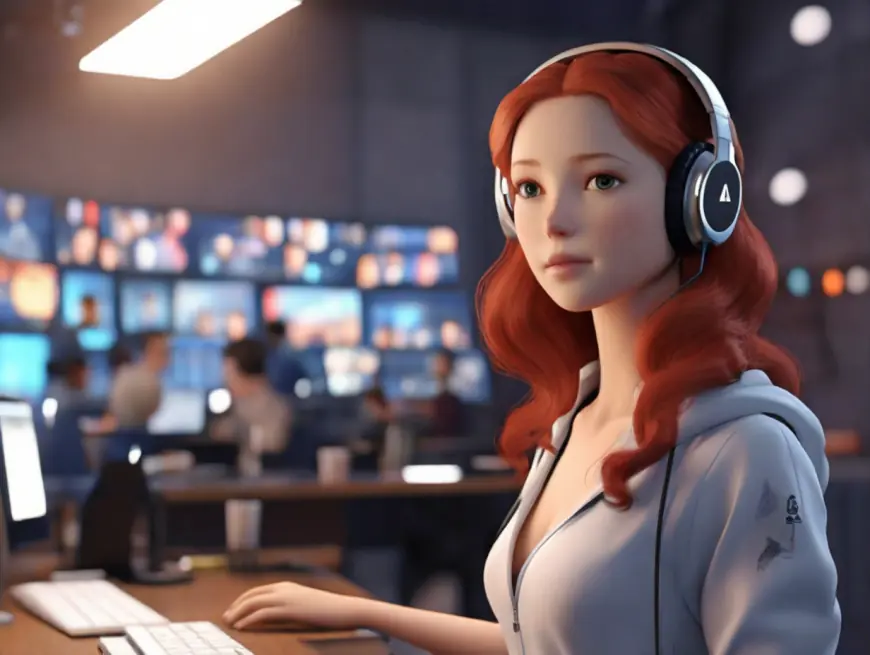AI Avatars in Broadcasting: A New Era in Content Creation
As a phenomenon in the telecasting business, AI has become very relevant in the newsrooms, and the real reporters and digital virtual ones are already with us. Hence, wherever the former seems weird, it will eventually make lots of sense in the future since the borderline between reality and unreal worlds is no longer a […]

As a phenomenon in the telecasting business, AI has become very relevant in the newsrooms, and the real reporters and digital virtual ones are already with us. Hence, wherever the former seems weird, it will eventually make lots of sense in the future since the borderline between reality and unreal worlds is no longer a barrier. Once competing companies take different change paths, IP function and its role as an emerging learning piece is the second thing to be learned.
AI-created news readers will already be happening as a continuous revolution both in the technique of news writing and journalism – creativity and imagination. Thus, today, we can see how advanced digital media imitates more human modes of communication by providing news as a read-out version and a humanized story told through digital means. Finally, it seemed that the existence of AI content overflowed everywhere we turned.
I concluded that developing a fail-proof plan would not be enough; on the contrary, I needed to consider the trademarks that protection of intellectual property law assures. A person also gets a range of rights based on their image and personality in the digital space.
Complex IP considerations
Protection of Algorithmic Assets: Companies should benefit from patent and trade secret protection of AI algorithms that will later be used as blueprints for AI avatars, just like other industries, which also see innovations faster.
Digital Likeness and Personality Rights: The business use of AI avatars requires that the personality rights be navigated through the spectrum of digital avatar’s characteristics, complete with the resemblance of the person who carries out the business model in life. The political identity of dispute is why there is behavior without adherence to ethics and contractual approvals to avoid court disputes.
Challenges of Deepfake Technology: The Iron fist of law should be exercised in dusting deepfake crime efforts to prevent the infringement of the right to digital representation, a like-drawn sword. Consulting with legal authorities and finding technical solutions based on digital watermarking could be the perfect remedy to the infringement issue.
Global IP Rights Management: Such regulation should be patterned closely after AI avatars’ legislation in other parts of the world, and that will be a consideration during this innovative phase in the AI world. Therefore, strategic methods that use international agreements are very useful in this regard.
Collaborative Efforts and Licensing: The question of the proper licensing contract lies with the efficient synchronization of those activities since it involves a certain number of entities that want to each be responsible for roles, operations, technologies, and developments that must be launched if we are to use an AI avatar deployment successfully.
Copyright Ownership of AI-Created Content: it will be necessary to clarify whether the existing copyright law will take this new territory or, per the conduct brought by AI works, it will be pointed out that subsequent law amendments will bring AI creations that are produced under the copyright law.
Evolving IP Laws: Many people are fascinated by the emerging technology of AI (Artificial Intelligence), as this technology will not stay in place for long and will continue improving the economy. With AI agriculture, newness is gaining a foothold in business processes and organizations, so the IMMEDIACY of adopting legal frameworks and policies is critical.
Crafting innovative IP strategies
The choice of a playground where an AI and big data merger leads to a gambling setting is largely the first step to a broad range of IP-related challenges. Developing the steps that will be happening in the scope and taking into account the text that will come in the future, corporations must have their IP strategies complicated enough to comprehend and resolve the legal and ethical problems if they arise. This means that companies will be more likely to encounter problems that arise from technological growth (e.g., organizational readiness).
AI avatars get the upper hand in the media, with AI not wanting the traditional television model, and the industry has to adapt to the change and the due change in the content, delivery, and consumption pattern that they would like. Companies and firms are quite agile to the wave of digital transformation, especially through sophisticated IP mechanisms that protect from avatars’ AI, and this has become a relevant property to endure in the underneath static through the changing business environment.
This article, in essence, discusses the need to protect AI creations under intellectual property rights and reasonable measures to handle the coming AI era. This brings about serious discussion due to fear and curiosity about the debate. Notably, many companies actively contribute to the industry’s embrace of AI. These companies, through strategic AI development and adoption, gain AI-added value but also set aside those risks.
This article originally appeared in the IAM
What's Your Reaction?




































































































